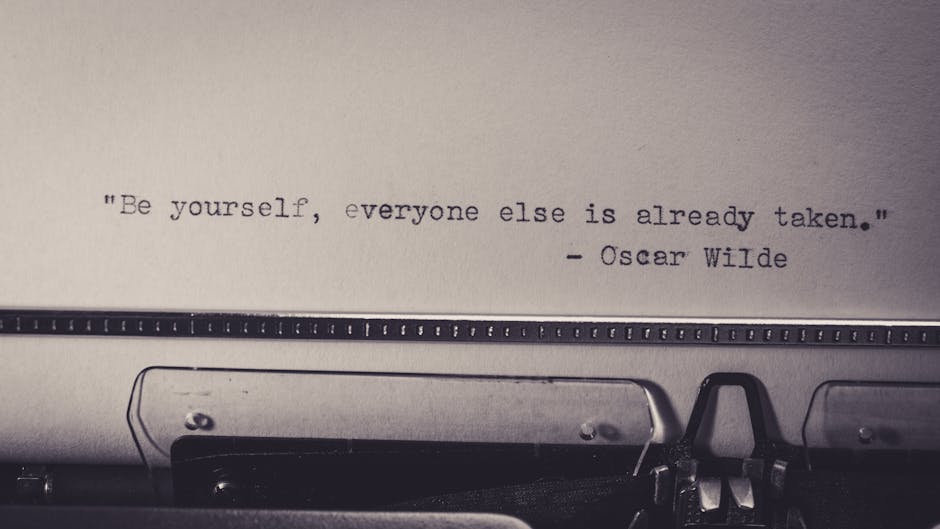How To Turn Mistakes Into Meaningful Milestones?
Mistakes are not the end of the road—they’re the stepping stones to growth and success.
Every misstep has the potential to teach you something valuable, helping you evolve into a stronger, wiser version of yourself.
If you’ve ever felt stuck or defeated by failure, keep reading. This guide will show you how to transform those blunders into powerful milestones that propel you forward.
Key Takeaways
- Mistakes are inevitable but can be powerful learning tools.
- Perspective matters—shifting your mindset can turn failures into opportunities.
- Practical strategies like reflection, innovation, and celebrating progress can help you grow.
- Real-life examples prove that success often stems from setbacks.
Introduction to Turning Mistakes into Meaningful Milestones
Understanding the Nature of Mistakes
Why mistakes are inevitable
Let’s face it: nobody’s perfect.
Mistakes are a natural part of being human. Whether you’re trying something new or tackling a familiar challenge, errors are bound to happen.
Think of mistakes as life’s way of nudging you toward improvement. They’re not a sign of weakness but a reminder that you’re pushing boundaries.
Common misconceptions about failure
Many people see failure as a dead-end, but that’s far from the truth.
Failure doesn’t define you—it’s just a temporary detour.
Believing that mistakes are catastrophic can hold you back. Instead, view them as opportunities to learn and grow.
The Importance of Perspective
Shifting from blame to growth
When something goes wrong, it’s easy to point fingers—at yourself or others.
But blame doesn’t solve anything. Instead, focus on what you can learn from the situation.
Ask yourself: What went wrong? What can I do differently next time?
Viewing mistakes as opportunities
Mistakes are like unpolished gems.
With the right mindset, you can turn them into something valuable.
For example, if you’ve struggled with fear of failure, use that fear as motivation to prepare better or try a new approach.

The Mindset Shift: From Failure to Growth
Embracing a Growth-Oriented Mindset
Learning from setbacks
Every mistake carries a lesson, but you have to be willing to look for it.
Instead of dwelling on what went wrong, focus on what you can take away from the experience.
For instance, if a project didn’t go as planned, analyze the root cause. Was it poor time management? Lack of resources? Identifying the issue is the first step toward improvement.
Cultivating resilience and adaptability
Resilience is like a muscle—the more you use it, the stronger it gets.
When you face setbacks, remind yourself that it’s okay to stumble. What matters is how you bounce back.
Adaptability is equally important. Being flexible allows you to pivot and find new solutions when things don’t go as expected.
Overcoming Fear of Failure
Recognizing fear as a barrier
Fear of failure can paralyze you, preventing you from taking risks or trying new things.
But here’s the thing: fear is often exaggerated. Most of the time, the worst-case scenario isn’t as bad as you imagine.
Strategies to build confidence
Building confidence takes time, but small steps can make a big difference.
Start by setting realistic goals that challenge you without overwhelming you.
Celebrate your progress, no matter how small, to reinforce a positive mindset.

Strategies for Turning Mistakes into Milestones
Analyzing and Reflecting on Mistakes
Identifying root causes
To learn from mistakes, you need to understand why they happened.
Was it a lack of preparation? Miscommunication? Unrealistic expectations?
Digging deep helps you address the underlying issues and prevent similar mistakes in the future.
Extracting valuable lessons
Once you’ve identified the root cause, think about what you’ve learned.
For example, if you missed a deadline, you might realize the importance of better time management.
Write down these lessons to keep them top of mind.
Implementing Changes and Innovations
Pivoting strategies for improvement
Mistakes often highlight areas for improvement.
Use this insight to tweak your approach. For instance, if a marketing campaign flopped, brainstorm new strategies or target a different audience.
Leveraging creativity to solve problems
Sometimes, mistakes force you to think outside the box.
Embrace this opportunity to get creative. You might discover a solution you wouldn’t have considered otherwise.
Celebrating Progress and Small Wins
Acknowledging growth over time
Progress isn’t always linear, but every step forward counts.
Take time to reflect on how far you’ve come, even if you’re not where you want to be yet.
Building momentum through achievements
Small wins can be incredibly motivating.
Each success, no matter how minor, builds momentum and boosts your confidence.

Real-Life Examples of Turning Mistakes into Success
Entrepreneurial Triumphs from Setbacks
Case studies of successful pivots
Many successful entrepreneurs started with failures.
For example, did you know that Walt Disney was once fired for “lacking creativity”?
Instead of giving up, he used that experience to fuel his passion, eventually creating one of the most iconic brands in history.
Lessons from “You Screwed Up!” by Alice Hlidkova
Alice Hlidkova’s book highlights how mistakes can lead to breakthroughs.
Her stories show that failure isn’t the end—it’s just the beginning of something better.
Stories of Resilience and Innovation
From bankruptcy to brilliance
Some of the world’s most successful people have faced bankruptcy.
Take J.K. Rowling, for example. Before Harry Potter became a global phenomenon, she was a struggling single mom.
Her perseverance turned her financial struggles into a magical empire.
The innovation odyssey: tales of tenacity
Innovation often stems from failure.
Think of Thomas Edison, who famously said, “I have not failed. I’ve just found 10,000 ways that won’t work.”
His persistence led to the invention of the light bulb, changing the world forever.

Building a Resilient and Adaptive Future
Creating a Culture of Learning
Encouraging open discussions about mistakes
In workplaces and communities, fostering open conversations about mistakes can lead to collective growth.
When people feel safe to share their experiences, everyone benefits from the lessons learned.
Promoting continuous improvement
A culture of learning emphasizes progress over perfection.
Encourage yourself and others to keep striving for better, even when things don’t go as planned.
Applying Lessons to Future Endeavors
Setting goals based on past experiences
Use your mistakes as a guide for setting future goals.
For example, if you’ve struggled with procrastination, set specific deadlines to stay on track.
Check out these techniques for managing fear of failure to help you stay motivated.
Maintaining a forward-thinking approach
Mistakes are part of the journey, not the destination.
Keep looking ahead, using what you’ve learned to pave the way for a brighter future.
Conclusion
Recap of Key Takeaways
The power of perspective and mindset
Your mindset shapes how you view mistakes.
By shifting your perspective, you can turn failures into opportunities for growth.
Strategies to turn adversity into advantage
Practical steps like reflection, innovation, and celebrating progress can help you transform mistakes into milestones.
Encouragement to Embrace Mistakes as Milestones
Inspiring readers to take action
Don’t fear mistakes—embrace them.
Each one is a chance to learn, grow, and move closer to your goals.
Reinforcing the value of growth through challenges
Remember, every great success story starts with a few stumbles.
So, the next time you make a mistake, don’t beat yourself up. Instead, ask yourself: What can I learn from this?
Your future self will thank you.
Mistakes aren’t failures—they’re lessons in disguise.
Turn them into milestones, and watch how far you can go.
FAQ: Transforming Mistakes Into Meaningful Milestones – Your Guide to Growth
Why is it important to view mistakes as opportunities for growth?
Mistakes provide valuable learning experiences, helping us identify areas for improvement and fostering resilience. By viewing them as opportunities, we can turn setbacks into stepping stones for personal and professional growth.
How can I shift my mindset to embrace mistakes rather than fear them?
Start by reframing mistakes as part of the learning process. Practice self-compassion, focus on the lessons learned, and remind yourself that even successful individuals have faced failures on their journey.
What are some practical steps to analyze and learn from a mistake?
Reflect on what went wrong, identify the root cause, and consider alternative approaches for the future. Writing down your thoughts or discussing them with a mentor can also provide clarity and actionable insights.
How can I use mistakes to build resilience and confidence?
Each time you recover from a mistake, you strengthen your ability to handle challenges. Celebrate your progress, focus on the skills you’ve gained, and use these experiences to boost your confidence in tackling future obstacles.
What role does accountability play in turning mistakes into milestones?
Taking responsibility for your actions allows you to learn and grow. Accountability fosters trust, encourages self-awareness, and demonstrates a commitment to improvement, which can lead to meaningful milestones in your journey.
Can mistakes help in fostering creativity and innovation?
Absolutely! Mistakes often push us to think outside the box and explore new solutions. Many groundbreaking innovations have emerged from unexpected errors, proving that creativity thrives in the face of challenges.
How do I handle the fear of repeating the same mistakes?
Focus on the lessons learned and implement strategies to avoid similar pitfalls. Keep track of your progress, seek feedback, and remain open to adapting your approach as needed to ensure continuous improvement.
What should I do if I feel overwhelmed by a significant mistake?
Take a step back and give yourself time to process the situation. Break the problem into manageable parts, seek support from trusted individuals, and remind yourself that mistakes are temporary and can lead to growth with the right mindset.
How can I help others turn their mistakes into meaningful milestones?
Encourage a culture of learning by sharing your own experiences, offering constructive feedback, and celebrating progress. Support others in reflecting on their mistakes and guide them toward actionable solutions to foster growth.
What are some inspiring examples of people who turned mistakes into success stories?
Many successful individuals, like Thomas Edison and Oprah Winfrey, faced failures but used them as stepping stones. Their stories remind us that perseverance, learning, and adaptability can transform mistakes into remarkable achievements.



